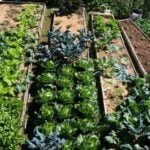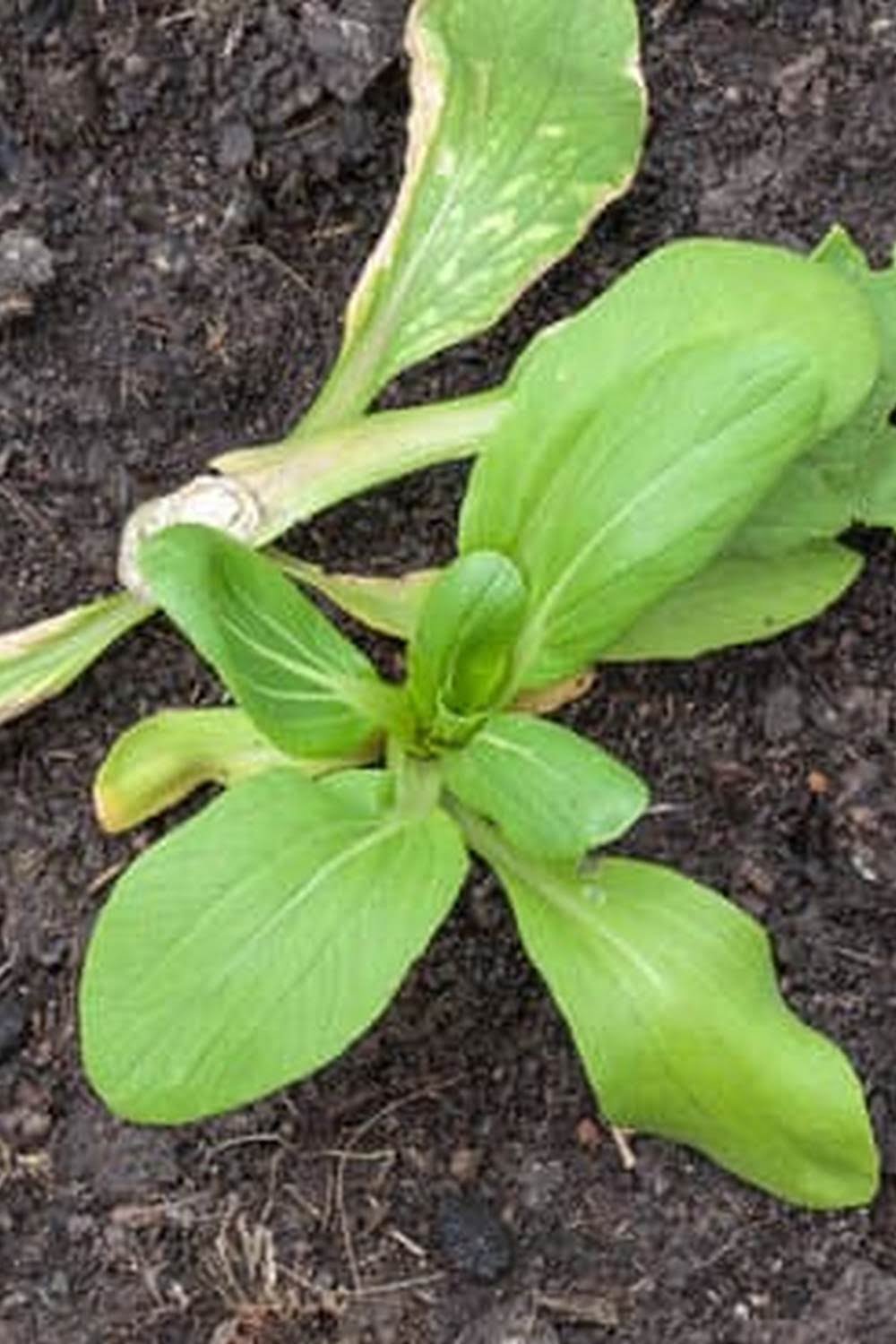How To Till Soil For Vegetable Garden
When preparing your garden plot for vegetables, it is important to till the soil to a depth of at least 6-8 inches. This will break up any large clumps, and will also help to incorporate organic matter (compost, manure, etc.) into the soil.
If your soil is clayey or compacted, you can use a hoe or garden fork to loosen it up before tilling. If the soil is sandy, you can add organic matter to help it hold water and nutrients.
Once the soil is loosened up, you can use a rototiller to till it. Start in one corner of the plot and work your way around, tilling the soil to a depth of 6-8 inches. Make sure to go over the entire plot, including the areas around the edges.
If you don’t have a rototiller, you can use a shovel or spade to turn the soil over by hand. This is a more time-consuming process, but it will still get the job done.
Once the soil is tilled, you can start planting your vegetables.
Garden Soil For Flowers And Vegetables
When it comes to growing flowers and vegetables, the type of soil you use is very important. You want to use soil that is rich in nutrients and that will provide your plants with the sustenance they need to grow big and strong.
There are many different types of soil available on the market, but not all of them are suitable for growing flowers and vegetables. Soil that is specifically designed for gardening is usually the best choice.
Garden soil is enriched with nutrients that help flowers and vegetables grow, and it also has a special composition that helps to retain moisture and oxygen. This type of soil is perfect for gardeners who want to grow beautiful flowers and healthy vegetables.
If you are new to gardening, it is important to do your research before you purchase any soil. Not all soil is created equal, and some types of soil are better suited for certain plants than others.
Soil that is high in clay is good for plants that need a lot of moisture, such as vegetables. Soil that is high in sand is good for plants that need a lot of drainage, such as flowers.
When you are buying soil for your garden, be sure to read the label carefully to make sure that it is specifically designed for gardening. If you are unsure about which type of soil to buy, ask the salesperson for advice.
Garden soil is available at most garden stores and home improvement stores. It is also available online, and you can usually find a variety of different brands and types to choose from.
Soil is an important part of any garden, and it is essential to choose the right type of soil for your plants. Garden soil is enriched with nutrients that help flowers and vegetables grow, and it also has a special composition that helps to retain moisture and oxygen. This type of soil is perfect for gardeners who want to grow beautiful flowers and healthy vegetables.
Testing Vegetable Garden Soil
One common question gardeners have is how to test their soil to see what nutrients it is lacking. The most common way to test soil is to send a sample to a soil testing lab. However, there are tests you can do at home to get a general idea of your soil’s pH and nutrient levels.
One easy way to test your soil is to use a soil pH meter. Soil pH meters are available at garden centers and home improvement stores. Soil pH meters test the acidity or alkalinity of your soil. Soil that is too acidic or too alkaline can be a problem for plants. Most vegetables prefer a soil pH of 6.5 to 7.0.
To test your soil pH, insert the soil pH meter into the soil and wait for a few minutes for the meter to stabilize. The pH reading will be displayed on the meter. You can also find pH readings online.
Another easy way to test your soil is to send a soil sample to a soil testing lab. Soil testing labs will test your soil for pH, nitrogen, phosphorus, and potassium levels. They will also test your soil for other nutrients, such as calcium and magnesium.
If you are interested in testing your soil for nutrients, there are a few things you can do. One thing you can do is to send a soil sample to a soil testing lab. Soil testing labs will test your soil for nitrogen, phosphorus, and potassium levels. They will also test your soil for other nutrients, such as calcium and magnesium.
Another thing you can do is to test your soil with a home soil test kit. Home soil test kits are available at garden centers and home improvement stores. Home soil test kits test for nitrogen, phosphorus, and potassium levels.
If you are interested in testing your soil for pH, there are a few things you can do. One thing you can do is to send a soil sample to a soil testing lab. Soil testing labs will test your soil for pH levels. They will also test your soil for other nutrients, such as calcium and magnesium.
Another thing you can do is to test your soil with a home soil test kit. Home soil test kits are available at garden centers and home improvement stores. Home soil test kits test for pH levels.
Amending Vegetable Garden Soil
If you’re like most home gardeners, you probably amend your vegetable garden soil every year. You add organic matter in the form of compost, manure or leaves to make the soil more fertile, improve drainage and water holding capacity, and to provide a healthy environment for the plants.
But do you know which amendment is best for your garden? Here’s a guide to some of the most common soil amendments, along with their benefits and drawbacks.
Compost is a great amendment for all soils. It improves soil structure, drainage and water holding capacity, and it increases the fertility of the soil. It also provides beneficial microorganisms that help to break down organic matter and improve the soil’s ability to absorb nutrients.
Manure is also a good amendment for all soils. It increases the fertility of the soil, and it also helps to improve drainage and water holding capacity. However, manure can also contain pathogens that can harm plants, so it’s important to use only well-composted manure.
Leaves are a good amendment for soils that are low in organic matter. They add organic matter to the soil, and they also help to improve drainage and water holding capacity.
Sphagnum peat moss is a good amendment for soils that are low in organic matter. It increases the fertility of the soil, and it also helps to improve drainage and water holding capacity. Peat moss is also acidic, so it’s important to add lime to the soil if the pH is below 6.5.
Eggshells are a good amendment for soils that are low in calcium. They add calcium to the soil, and they also help to improve drainage and water holding capacity.
Wood ashes are a good amendment for soils that are low in potassium. They add potassium to the soil, and they also help to improve drainage and water holding capacity.
Calcium chloride is a good amendment for soils that are low in calcium. It adds calcium to the soil, and it also helps to improve drainage and water holding capacity.
Soil amendments can be helpful in improving the fertility, drainage and water holding capacity of your vegetable garden soil. But it’s important to choose the right amendment for your garden, and to use them in the right amounts. Talk to your local garden center staff for more information on soil amendments, and how to use them in your garden.
Alkaline Soil Vegetable Garden
Most vegetables prefer a slightly acidic soil pH of 6.0 to 6.8, but there are some vegetables that can grow in alkaline soil. The key to growing vegetables in alkaline soil is to amend the soil with organic matter to increase the water-holding capacity and to improve the soil structure. Vegetables that grow well in alkaline soil include:
Asparagus
Beets
Broccoli
Cabbage
Cauliflower
Chard
Chinese Cabbage
Collards
Corn
Cucumber
Eggplant
Kale
Lettuce
Melons
Okra
Onions
Parsley
Peas
Peppers
Pumpkins
Radishes
Spinach
Squash
Tomatoes
Turnips
Watermelon

If you’re looking to get into vegetable gardening, or are just looking for some tips on how to make your current garden better, then you’ve come to the right place! My name is Ethel and I have been gardening for years. In this blog, I’m going to share with you some of my best tips on how to create a successful vegetable garden.





